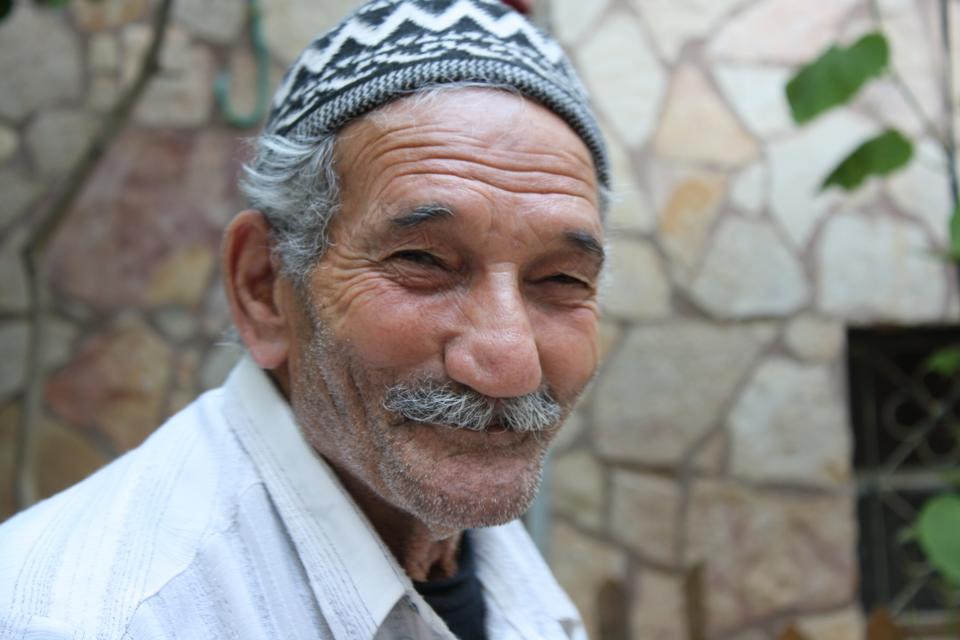
News
Cambridge Residents Slam Council Proposal to Delay Bike Lane Construction

News
‘Gender-Affirming Slay Fest’: Harvard College QSA Hosts Annual Queer Prom

News
‘Not Being Nerds’: Harvard Students Dance to Tinashe at Yardfest

News
Wrongful Death Trial Against CAMHS Employee Over 2015 Student Suicide To Begin Tuesday

News
Cornel West, Harvard Affiliates Call for University to Divest from ‘Israeli Apartheid’ at Rally
Capturing “Beautiful Resistance”
Senior’s photography finds beauty of daily life in Palestinian refugee camp

“They told me, ‘Everyone takes pictures of the Israeli soldiers—soldiers at the checkpoints, soldiers with guns. But what nobody takes pictures of is kids going to school,’” Alex W. Palmer ’12 said, walking through an exhibition of his photography in CGIS Knafel. The exhibition, entitled “The Beautiful Resistance: Life Beyond the Wall in the West Bank,” runs through March 30 and is composed of photographs taken at Aida, a Palestinian refugee camp in Bethlehem. Palmer, a social studies concentrator, taught photography in Aida last summer through Al-Rowwad, a Palestinian organization that works to promote nonviolence among Palestinian children through education and artwork.
Al-Rowwad was founded in 1998 and has been in Aida for over 10 years; according to its website, its mission has been the “promotion of human values and respect of human rights through arts and education as ways of beautiful and non-violent means of self-expression.” Palmer’s photos suggest that in Aida, art is a force to both communicate and encourage resilience. Street art covers the camp’s walls in many photographs, and Palmer explains that it is one way Aida’s inhabitants make the camp feel like a home.
Still, the street art may be not enough for them to entirely reclaim a place. Palmer says many residents still do not see Aida as their own. “These people had been [in Aida] since 1948, but they still consider themselves to be refugees,” Palmer says. “A popular conversation topic is what the idea of home really means to them.”
Many of Palmer’s photographs are of children—a boy teaching his friend to ride a bike that’s far too big, three boys wrestling happily on a street, a sliver of a little girl peeping around a doorway. There are adults, too, and even some soldiers, but none of them show hostility. The photograph by which Palmer is standing instead shows the Palestinian soldier caught in the act of preparing dinner for his comrades, smiling at the camera as he kneels on the street behind a couple of food sacks and a large bottle of Pepsi.
As Palmer pauses by another photograph—a man operating his all-night falafel stand in the peace of an open doorway—he explains the approach that many of Aida’s inhabitants took to their circumstances: to “counter by living the best life you can.” The residents express their philosophy in a favorite phrase, “the beautiful resistance,” which inspired the title of Palmer’s exhibit. “The Beautiful Resistance” implies a focus on the grace and power of ordinary living, or, as Palmer puts it, “The best thing you can do [in the circumstances of a refugee camp] is to live a beautiful life.”
The everyday reality of this attitude is apparent in the spirit and animation of Palmer’s subjects. Palmer remarks that in a Kenyan refugee camp where he hsd done some work in the past, people were not nearly so eager to have their photographs taken; “20 percent of the time, they’d refuse,” he says. In Aida, he explains, “[the residents] realize that what they’re doing every day has a big impact.”
“What really strikes me about these photos is how happy [the subjects] are despite their living situation,” Caroline D. Huang ’13 says. The residents’ vigorous approach to life is evident in Palmer’s photos, partly in the vibrancy of the streets he captures—the elaborate graffiti on the high white stucco walls, the unexpected colors of hanging laundry or fruit juice around a child’s mouth—but partly in the subjects themselves, almost all of whom are making eye contact with Palmer’s camera.
Palmer has a story to tell about every person he photographed. He met the group of soldiers while he was buying yogurt in a local grocery, and they invited him to have dinner with them. In another photo, a man bicycles down the street while carrying his contented daughter over one shoulder. “He did that every day for about 40 minutes in front of my house,” Palmer says.
One of Palmer’s photographs depicts a teenager he met on arrival; the young man is waiting for someone to seesaw with him at a playground at a culture center in the middle of the camp. It’s one of Palmer’s many favorite shots that feature a personal friend.
The final photo in the exhibition shows a mural, done in muted tones, of what Palmer describes as “an ideal Palestinian community”—a woman and two children stand in front of a pale brown house and a bland green field. Next to the mural, two boys in red shirts stand in the street, beneath a cascade of balconies bright with drying laundry. “They’re waiting for their friend to come over,” Palmer says. He smiles and then continues, “I like it because life here is so much brighter than even the artwork.”
—Staff writer Aisha K. Down can be reached at aishadown@college.harvard.edu.
Want to keep up with breaking news? Subscribe to our email newsletter.
